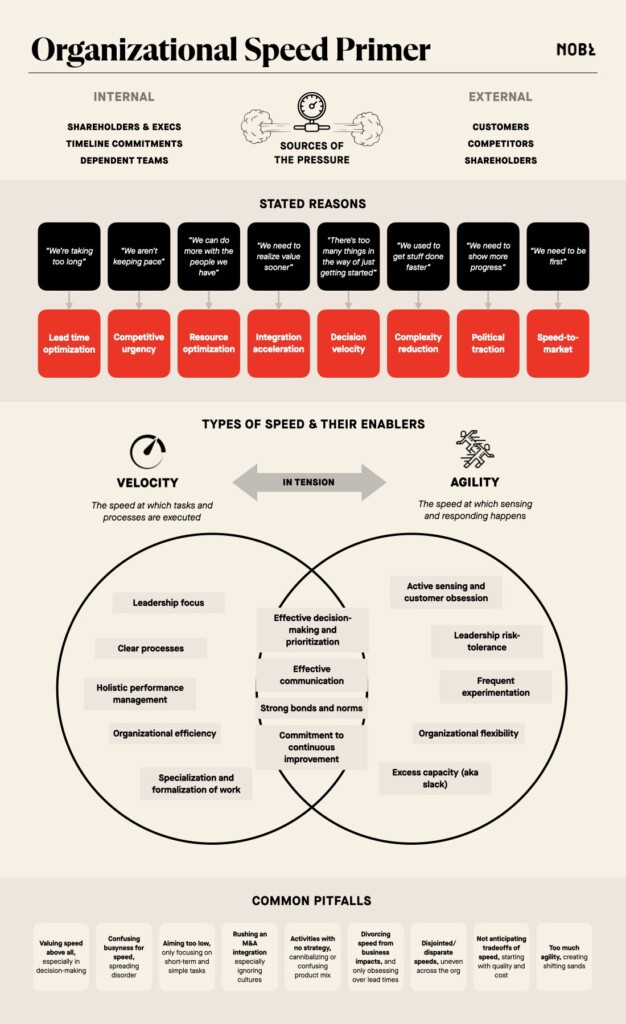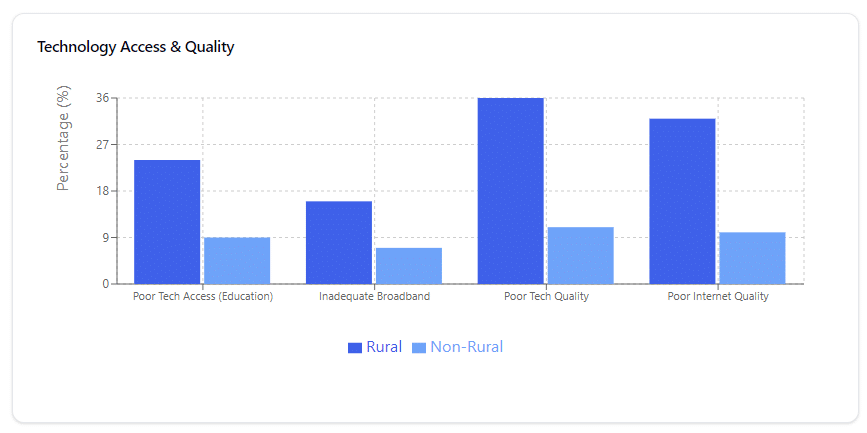Organizations feel intense pressure to move faster; after all, speed is often not just a competitive advantage, but can be the deciding factor of market dominance. The need for speed is real and often essential. But in your attempt to speed up, beware confusing “speed” for other things:
- Nostalgia. Some organizations remember a time when they were small and scrappy, and could get things done faster. But growth brings complexity, and coordination and risk management often mean slowing down.
- Freneticism. Fast-paced, intense work can feel like speed, but doesn’t necessarily result in, well, results. If teams make rapid decisions without considering their impact on the business or objectives beyond “fast,” they can end up far from the original strategy, leaving chaos in their wake.
- Heroic Efforts. In “fire drill” cultures, teams leap from emergency to emergency, and those who go “above and beyond” are celebrated. This not only leads to burnout, but it often results in organizations losing the ability to do bigger things together because it’s easier and more celebrated to do small, isolated things.
“Speed” is actually a generic term that refers to two distinct concepts: velocity, the rate at which tasks and processes are executed, and agility, the rate at which organizations can adapt and iterate. While velocity and agility share some practices—effective decision making and communication, prioritization, and strong bonds and norms among teammates—they’re often in tension, and organizations that perfect one do so at the cost of the other.

If you’re feeling increased pressure to pick up the pace within your own organization, consider:
- Why? Where is the need for speed coming from, and is it truly aligned to your market strategy?
- Which kind? Are you lamenting how long your processes take (i.e., velocity) OR are you wishing your teams could adapt and respond more quickly to market changes (e.g., agility)? Or both?
- In which areas of the business? Even the fastest organizations on the planet don’t move at the same speed, or for the same reasons, across every discipline or function. Moreover, some teams are more focused on velocity (e.g., physical production) and others agility-obsessed (e.g., marketing).
- At what cost? Speed always comes with a tradeoff, whether that’s quality, cost, or even internal alignment. Decide now and make peace with the consequences of speeding up.
- With what support? Speed, like any competitive advantage, requires its own unique support: executives with a clear enough strategy to do tricky prioritization, managers smart enough to make decisions quickly without constant escalation, teams staffed adequately enough to focus on a limited number of projects in progress, and tools and rituals to spread information effectively. What do you need to make speed possible?
- Starting how? Lots of leaders bang the drum for speed, but where will you start so that it’s a lived way of working and not just a demand? Should you pick one project and staff and execute it in a completely new way to try to achieve speed? Maybe isolate one burdensome process to streamline to give every initiative a boost? There’s no single way to get started, but you have to start somewhere.
Avoid Common Speed Bumps
As you get started, keep your eyes out for these all-too-common pitfalls:
- Valuing speed above all. Leaders can get addicted to speed—especially speedy decision making—and see it as the end-all-be-all, versus what it produces for the organization. Yes, a fast meeting feels good, but make sure the organization is on the way to achieving the outcomes you designated at the start of the change.
- Aiming too small or skipping strategy. Smaller projects and less important decisions are easier to do quickly, but they may not have the impact of a larger project that requires a team to work together. Don’t become a “feature factory” or constantly launch new products without understanding what you’re trying to achieve long-term.
- Rushing culture. Constant, rapid, and dramatic shifts can leave teams feeling they have no idea where the organization is going. Deadlines don’t always incorporate the time it takes for people to adapt to change. Check in with your teams regularly to ensure they understand what’s going on, and how they need to evolve their working patterns to match.
- Disjointed teams. While not all teams need to move at the same rate, if one is dependent on the other for a certain output, speeding up one can lead to frustration and backups. Review the processes and communication that connect teams to avoid problems down the line.
Published March 22, 2024









